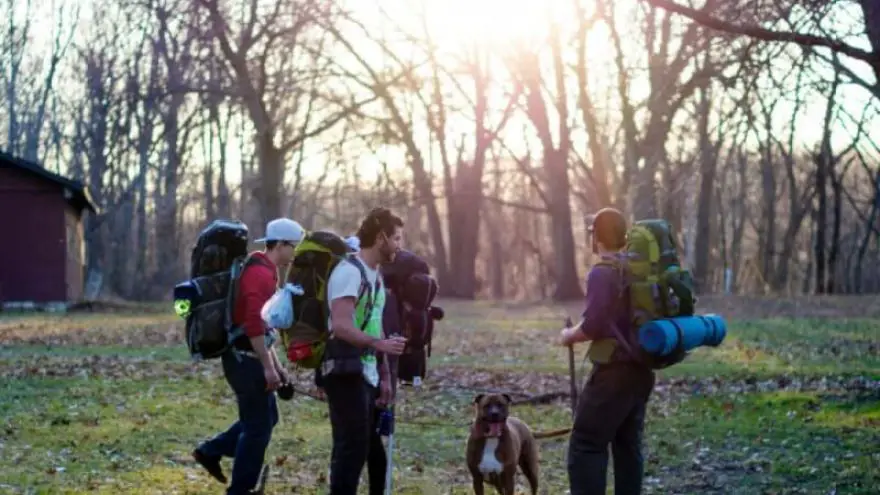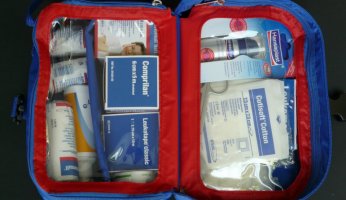How to Pack for an Overnight Backpacking Trip
 How to Pack for an Overnight Backpacking Trip
gearweare.net
How to Pack for an Overnight Backpacking Trip
gearweare.net
For the nature lover short on extra time, a one night backpacking trip is a great way to get into the outdoors. Picking what to bring can seem over whelming to the novice backpacker though. Listed below are the basics of what should be included in your bag during overnight jaunts into the backcountry. These are things that you will pretty much always want to have with you on any backpacking trip, although time of year, the environment your hiking in, and eventually the preferences you develop as you gain experience, do allow for some flexibility. Also, note that this list is catered to three season camping and winter camping requires more specialized gear.
Table of Contents
The Basics
Backpack:
A good pack is crucial to comfort while backpacking. Look for something with an internal frame that lifts the pack off your back, and highly adjustable straps. For an overnight trip a 35-50 liter pack will have sufficient room. However, if you plan to do longer trips investing in a bag that can hold 50-75 liters is prudent.
Shelter:
Any time you will be spending the night outdoors, some sort of shelter is integral to staying safe. Even if it is hot and you plan on sleeping under the stars, bring a tarp in case the weather changes for the worse. Besides a tarp, hammocks, bivy sacks, and tents also provide shelter. Tents are the most popular option; however, they are also the heaviest. Look for a lightweight backpacking tent. A one-person tent will be the lightest, but will be tight if you want to bring your bags inside at night. A two-person tent will provide extra space if your hiking solo. It also allows you to bring one tent if you have a partner. When hiking with a partner dividing the tent components between your bags helps to lighten the load.
A sleeping bag and sleeping pad are the other important components to your backpacking shelter. Make sure to check the weather before heading out to make sure your sleeping bag is rated to keep you warm all night long. Your sleeping pad, whether insulated or not, also helps to keep you warm by elevating you above the cold ground. If you are sleeping in a hammock, a sleeping pad may not be necessary. Likewise, in warmer temperatures bringing both of these items becomes less vital, although they are always recommended.
Tools and First Aid
Map and Compass:
The GPS in your smart phone can’t be counted on in the backcountry, so a map of the area you are hiking in as well as a compass should always be included in your bag. Proper knowledge of how to use these tools is also necessary. Spend some time looking at the map before heading out – trace the trail, pick destinations for camping, and study the topography lines. Also, look at the direction the trail you’ll be following moves in.
Knowledge on how to read your map and compass are not just important if you get lost. These skills allow you to figure out how much distance you have covered. If a sudden storm comes up or you move more slowly than you expected, being able to pinpoint where you are and how far you have to your destination is critical to survival.
Other Tools:
The following tools should also always be included in your backpack: a headlamp (make sure to check the batteries for packing this item); a lighter and/or fire starter kit; a knife or multi-tool; parachute cord (p-cord); and sunglasses.
First Aid:
A good first aid kit is the one thing you should always have in your backpack that you never want to use. Backpacking first aid kits should have everything you need to clean and bandage wounds of various sizes, moleskin and other items to prevent blisters, and tools like tweezers and blunt trauma scissors. Over the counter medications to treat common ailments, bug spray, and sunscreen should also be included. Finally, if anyone in your party uses prescription medications, make sure they have enough for however long you will be on the trail.
Meals
Having enough food for nutrition on the trail is integral to success. For overnight backpacking trips, it’s easy to keep it simple and avoid cooking. Not needing to cook means you don’t need to bring a camp stove. However, if you want hot coffee in the morning, stove will be necessary and lightweight options like a Jetboil really won’t add that much extra weight.
An example of meals you could pack that don’t require any cooking are fruit and trail mix for lunch, a premade sandwich for dinner, and hardboiled eggs and granola for breakfast the next day. If you decide to bring a stove your options for food become much more varied.
Whatever you decide to eat, remember to bring a bear bag or some other system for keeping your food and trash away from animals during the night. Elaborate systems are available, however an airtight bag tied hanging from a tree works just fine.
Finally, while backpacking, a system for getting water is crucial. If you are going on a one night trip it may be possible to carry enough water from the outset, however this can be quite heavy. A few liters and a water purifier will reduce the weight of your bag and guarantee you won’t run out.
Clothes
For an overnight backpacking trip, an outfit for hiking during the day and an outfit for sleeping are really all that are necessary. Pick hiking clothes that can be layered and make sure to check the weather. If it will be chilly, an insulated jacket, long johns, a hat, and gloves will greatly increase your comfort. If there is any chance of rain always bring a rain jacket and pants. Extra socks and underwear are the only superfluous clothes you should bring. They don’t take up much space or add much weight, and are something you’ll be grateful to have if you need them.
Your sleeping clothes should be appropriate for keeping your cozy at whatever the lowest nightly temperature is. Clean sleeping clothes will also do a lot to make your more comfortable. If it is super cold, bring a pair of thick socks just to be worn at night.











